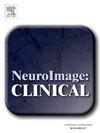Altered neural signalling during reward anticipation in children and early adolescents with high psychotic-like experiences
IF 3.6
2区 医学
Q2 NEUROIMAGING
引用次数: 0
Abstract
Background
Schizophrenia is associated with abnormalities in neurodevelopmental processes. Furthermore, dysfunctional neural circuits involved in reward processing may be linked to the development of symptoms in schizophrenia and are predictive of long-term functional outcome. It is however unknown whether neural signatures of reward anticipation are detectable in children with high psychotic-like experiences.
Methods
Using data from the ABCD study 4.1, we defined a healthy control (N = 50) and a high psychotic-like experience (N = 50) group with a Prodromal Psychosis Syndrome (PPS) score > 3 and distress score > 6 at baseline (9–10 years) and 2nd year follow-up (11–12 years). While undergoing functional MR-imaging, all children completed the Monetary Incentive Delay task. Using the preprocessed ABCD-data, we explored whether behaviour and brain activations for reward and loss anticipation in areas underlying reward processing differed between groups and time-points. Furthermore, we investigated whether those brain activations that showed differences between the groups were predictive of later PPS scores. Additionally, we also employed computational modelling to assess response vigour.
Results
While response times did not differ, the computational model revealed that response vigour for salient cues was significantly lower in the high PLEs compared to controls at baseline. We also found that children with high PLEs demonstrated lower activation during reward anticipation in the anterior insula at the baseline time-point; the nucleus accumbens, the putamen, the dorsolateral (dlPFC) and the ventral medial prefrontal cortex at the 2nd year follow-up, and in the caudate at both timepoints, compared to controls. Regression analysis revealed that deactivations in the left anterior insula and left dlPFC, was predictive of later PPS scores.
Conclusion
This study reveals that neural alterations during reward anticipation are detectable in children with high PLEs. These dysfunctions in neural activation patterns may serve as potential predictive biomarkers for psychosis.
具有高度精神样经验的儿童和青少年早期奖赏预期中的神经信号改变
精神分裂症与神经发育过程异常有关。此外,参与奖励处理的功能失调神经回路可能与精神分裂症症状的发展有关,并可预测长期功能结果。然而,在具有高度精神病样经验的儿童中,是否可以检测到奖励预期的神经特征尚不清楚。方法使用ABCD研究4.1的数据,我们定义了一个健康对照(N = 50)和一个高精神病样经历(N = 50)组,其前驱精神病综合征(PPS)评分为>;3、遇险评分>;6例基线(9-10年)和第二年随访(11-12年)。在进行功能性核磁共振成像时,所有儿童都完成了金钱激励延迟任务。使用预处理的abcd数据,我们探索了奖励处理区域的行为和大脑对奖励和损失预期的激活在不同组和时间点之间是否存在差异。此外,我们还研究了显示各组之间差异的大脑激活是否可以预测后来的PPS评分。此外,我们还采用计算模型来评估反应力度。结果虽然反应时间没有差异,但计算模型显示,与基线时的对照组相比,高ple组对显著线索的反应活力显著降低。我们还发现,在基线时间点,高PLEs的儿童在前脑岛的奖励预期中表现出较低的激活;在第二年的随访中,伏隔核、壳核、背外侧(dlPFC)和腹侧内侧前额叶皮层,以及在两个时间点的尾状核,与对照组相比。回归分析显示,左侧前岛和左侧dlPFC失活可预测后期PPS评分。结论本研究揭示了高ple儿童奖赏预期过程中的神经改变。这些神经激活模式的功能障碍可能作为精神病的潜在预测性生物标志物。
本文章由计算机程序翻译,如有差异,请以英文原文为准。
求助全文
约1分钟内获得全文
求助全文
来源期刊

Neuroimage-Clinical
NEUROIMAGING-
CiteScore
7.50
自引率
4.80%
发文量
368
审稿时长
52 days
期刊介绍:
NeuroImage: Clinical, a journal of diseases, disorders and syndromes involving the Nervous System, provides a vehicle for communicating important advances in the study of abnormal structure-function relationships of the human nervous system based on imaging.
The focus of NeuroImage: Clinical is on defining changes to the brain associated with primary neurologic and psychiatric diseases and disorders of the nervous system as well as behavioral syndromes and developmental conditions. The main criterion for judging papers is the extent of scientific advancement in the understanding of the pathophysiologic mechanisms of diseases and disorders, in identification of functional models that link clinical signs and symptoms with brain function and in the creation of image based tools applicable to a broad range of clinical needs including diagnosis, monitoring and tracking of illness, predicting therapeutic response and development of new treatments. Papers dealing with structure and function in animal models will also be considered if they reveal mechanisms that can be readily translated to human conditions.
 求助内容:
求助内容: 应助结果提醒方式:
应助结果提醒方式:


